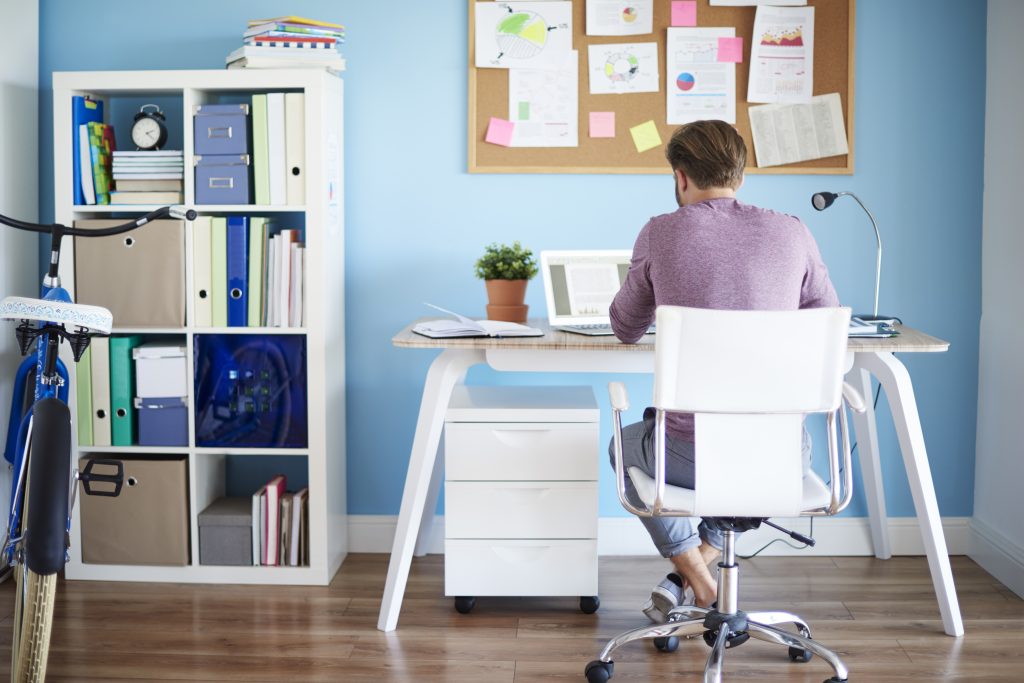In today’s fast-paced and ever-changing work environment, creating workspaces that inspire productivity is more important than ever. Whether you’re working from home, at the office, or in a hybrid setting, your physical workspace can significantly impact your mood, focus, and overall efficiency. Research shows that an optimized work environment can not only boost productivity but also enhance creativity, well-being, and job satisfaction.
This article explores emerging trends in workspace design and offers practical tips for creating an environment that fosters productivity. We’ll look at how lighting, layout, ergonomics, and personalization play a role in optimizing your workspace for success.

The Growing Importance of Workspaces in Boosting Productivity
A well-designed workspace can greatly influence both the mental and physical aspects of work. According to a 2022 study from Harvard Business Review, employees who have control over their work environment are more productive and happier in their roles. The study also found that workspaces with natural light, plants, and flexible layouts led to significant improvements in employee engagement and overall satisfaction.
With more people working remotely or in hybrid settings, the traditional office model has evolved. Employees now prioritize workplaces that offer comfort, flexibility, and personalization. At the same time, businesses recognize that an efficient workspace directly correlates with their bottom line—higher productivity, better employee retention, and overall growth.
1. Flexible Layouts and Open Spaces
One of the major shifts in modern workspace design is the move away from rigid, traditional layouts to more flexible, open spaces. The rise of open-plan offices has been a response to the need for collaboration, but this layout has also sparked the trend of providing spaces that allow employees to choose where and how they work.
The Benefits of Flexible Layouts
- Encourages Collaboration: Open spaces allow teams to interact more easily, sparking creativity and brainstorming sessions.
- Boosts Employee Satisfaction: When employees have a say in how their workspace is structured, they feel more in control and engaged.
- Adaptable to Needs: With movable furniture and flexible spaces, employees can quickly change their environment based on the task at hand—whether it’s a collaborative meeting or focused individual work.
Practical Tip: To create a more flexible workspace, consider modular furniture, adjustable desks, and areas that can serve multiple purposes. Offering quiet zones for focused work alongside collaborative areas encourages balance.
Key Takeaway: Flexible layouts allow employees to customize their workspace, fostering both creativity and productivity.
2. The Power of Natural Light
It’s no secret that lighting plays a critical role in how we feel and perform in our workspaces. Natural light is one of the most effective ways to create a productive and energized environment. In fact, studies show that natural light improves focus, reduces stress, and helps regulate circadian rhythms, which are essential for maintaining energy levels throughout the day.
Why Natural Light Matters
- Improves Mood: Exposure to natural light helps stimulate serotonin production, improving mood and reducing the likelihood of depression.
- Enhances Focus and Alertness: People working in environments with natural light tend to report better concentration and less fatigue.
- Supports Healthier Sleep Patterns: Natural light exposure helps regulate the sleep-wake cycle, ensuring employees stay alert during the day and get restful sleep at night.
Practical Tip: If possible, position desks near windows or use glass partitions to let natural light flow into your workspace. If working from home, consider light-colored curtains that allow sunlight to penetrate. Alternatively, light therapy lamps are a great way to mimic natural sunlight, especially in spaces with limited windows.
Key Takeaway: Maximizing natural light in your workspace enhances mood, focus, and productivity while promoting overall well-being.
3. Ergonomics: The Foundation of Comfort
When it comes to designing a productive workspace, ergonomics is non-negotiable. Poor posture and uncomfortable seating can lead to physical discomfort, which in turn, can decrease productivity. The rise in remote work has made it even more important to create ergonomically friendly home office setups that prioritize comfort and well-being.
Key Ergonomic Considerations for Workspaces
- Chair Design: A good ergonomic chair promotes posture and reduces back and neck pain. Look for chairs with adjustable lumbar support, armrests, and seat height.
- Desk Height: Your desk should be at a height where your forearms are parallel to the floor when typing, reducing strain on your wrists and shoulders.
- Keyboard and Monitor Placement: Place your keyboard at a comfortable height to avoid wrist strain. Position the monitor screen at eye level to reduce neck and eye strain.
Practical Tip: Invest in an adjustable chair and desk, particularly for remote work. If you’re working from a laptop, use a separate keyboard and a laptop stand to ensure better posture.
Key Takeaway: Ergonomic design is crucial for ensuring comfort and preventing physical strain, which helps maintain focus and productivity.
4. Incorporating Greenery and Biophilic Design
Biophilic design, which integrates natural elements into the built environment, is an emerging trend in workspace design. Plants, natural materials, and nature-inspired décor can help connect employees with the outdoors and provide a calming atmosphere that promotes creativity and well-being.
Benefits of Biophilic Design
- Reduces Stress: Studies show that plants in the workplace can reduce stress levels and improve concentration and creativity.
- Improves Air Quality: Indoor plants help purify the air by absorbing toxins and releasing oxygen, which leads to better air quality and a healthier environment.
- Boosts Creativity: Exposure to natural elements, such as plants and natural light, enhances cognitive function and boosts creativity.
Practical Tip: Add indoor plants to your workspace—succulents, ferns, and low-maintenance plants like pothos are great options for beginners. If you don’t have room for a garden, nature-themed décor or natural materials like wood can also provide a calming effect.
Key Takeaway: Incorporating nature through biophilic design reduces stress, improves air quality, and fosters creativity, all of which contribute to a more productive workspace.
5. Personalization: Making the Space Your Own
One of the key trends in modern office design is personalization. A workspace that feels comfortable and reflects personal style can significantly boost productivity. Whether you’re working from home or in an office, personalization helps create a positive emotional connection with your environment, making it easier to engage with your work.
The Benefits of Personalizing Your Workspace
- Improved Morale: Personalizing your workspace with décor or items you love creates a more welcoming environment and boosts morale.
- Enhanced Focus: A space that feels comfortable and uniquely yours can reduce distractions, allowing for better concentration.
- Sense of Ownership: Personalizing your workspace fosters a sense of control and responsibility, which can increase motivation and productivity.
Practical Tip: Add personal touches like artwork, photos, or your favorite plants. Choose décor that motivates you, whether it’s calming colors or inspiring quotes.
Key Takeaway: Personalizing your workspace helps create a positive and motivating environment that encourages focus and productivity.
6. Creating a Balanced Environment: Quiet vs. Social Spaces
The modern workspace is about balance. While some tasks require concentration and solitude, others benefit from collaboration and social interaction. This balance can be achieved by designing spaces that cater to both needs.
Why Balance is Important
- Focused Work: Quiet zones or private offices are essential for tasks requiring deep focus, like writing or coding.
- Collaboration: Open spaces or breakout rooms facilitate communication and idea-sharing, helping teams work together efficiently.
Practical Tip: If you’re designing your own workspace, set up designated areas for both quiet work and collaborative sessions. A mix of private spaces and open areas promotes flexibility and improves work-life balance.
Key Takeaway: A workspace that accommodates both quiet and social areas fosters productivity and teamwork, ensuring employees have the flexibility they need.
Conclusion: Designing Workspaces That Fuel Productivity
Creating workspaces that inspire productivity is essential for success in today’s competitive world. From flexible layouts and natural lighting to ergonomic furniture and biophilic design, each element plays a crucial role in shaping an environment that enhances focus, creativity, and well-being.
Whether you’re working from home or designing an office, implementing these trends can help you build a workspace that supports your goals and promotes long-term productivity. By focusing on comfort, flexibility, and personalization, you can create an environment that not only encourages work but also fosters a sense of well-being and balance.
Reference
- How does workplace design impact employee satisfaction, https://blogs.psico-smart.com
- The Impact of Office Design on Employee WellBeing and WorkLife Harmony” https://blogs.vorecol.com
- Personalized Workspace Design: https://thereceptionist.com









